By Andrew Harrison
Since the turn of the century, the heavyweight division has often been as appealing as ringworm. And “Buster” Douglas is to blame.
When sport’s most iconic underdog punched Mike Tyson into an alternate universe nearly thirty years ago—reconfiguring both the fallen champ’s future, and his past—he meddled with the natural order of things. It began a chain of events that diminished the big men.
Buster’s conqueror, Evander Holyfield, found himself in a cosmic void. Feeling like a champion by default, “The Real Deal” epitomized one of the most erratic stretches in heavyweight history, where inconsistency ruled, belts traded like Apple stocks and boxing’s governing bodies put disaster capitalism to work in the hullabaloo. Tyson’s value appreciated while he rusted in jail.
Master trainers Eddie Futch and Emanuel Steward tried to mitigate matters. Octogenarian Futch gave a lifetime’s wisdom to Brooklyn behemoth Riddick Bowe—who scored an epic victory over Holyfield and was never quite the same again. After rebuilding Holyfield in 1993, Steward—something of a hired gun at this point—embarked on an even bigger reclamation project: fulfilling the promise of Lennox Lewis. Aside from a disastrous king-hit in Africa near the end of his career, Lewis completed his journey and rekindled the public’s fascination with the heavyweight champion of the world.
After Lewis bucked the system by retiring in 2004, Ukrainian brothers Wladimir and Vitali Klitschko ruled for eleven years that dragged like jail time. Governing like Zeus and Poseidon, yet devoid of the magic that made the heavyweight greats great, the pair systematically defeated a succession of hapless foes who were usually too small, overweight, or out of their depth.
And then Tyson Fury—an English galoot named after “Iron” Mike—offered hope. The bizarro ‘90s spirit incarnate, Fury unseated an aging Wladimir Klitschko in Germany, before tailspinning into wreckage. In doing so, he set up the best four-way heavyweight rivalry since 1992—when Lewis, Bowe, Holyfield, and Tyson-victim Donovan “Razor” Ruddock vied for possession of a discarded throne.
***
The new heavyweight four horsemen are a rejuvenated Fury, titleholders Anthony Joshua and Deontay Wilder, and newcomer Oleksandr Usyk.
Comical, garrulous, and unfiltered, Fury’s path was preordained by a family and community steeped in the psychology of fistfighting. As a Traveller, he was born on the move, adapting and surviving. As an outsider, he became immersed in a masculine code of pride, honor, and defiance.
The “Gypsy King’s” rise was educative. Awarded a gift decision in his eighth pro fight, when he hit the wall against stubby John McDermott, he has repeatedly guffawed into the abyss. Hampered by poor discipline and a maverick streak, Fury’s assets are a rebel spirit; his awkward, herky-jerky style; his massive frame, all six-feet-nine-inches of it; and a natural fitness he’s consistently undermined.
A Fury promotion begins and ends with his talking. The old Ali trick of probing and chiding, an instinctive sizing-up process that declares: “I am in charge here. You’ll play second fiddle to me, and then we’ll repeat this in the ring.” And while he’s been interrupted, no one has yet shut him up—apart from when he completed a retrospective, two-year doping ban in 2017, and he refused to speak about it. Fury kept talking about other things, though, reflecting instead on a relatable battle with depression that left him in such dreadful physical condition that he could have passed for a shut-in.
In his two biggest challenges to date, against Klitschko and Wilder, Fury, 27-0-1 (19), jiggled on a tightrope. For all of his 250-pound heft, Fury, thirty, doesn’t punch his weight. His style can be summarized by watching the first half of the first round of the Wilder fight. The bell rings and Fury takes center ring and begins feinting with his hands, which are constantly twitching to keep opponents guessing, and which he waves mid-way between him and Wilder to gauge Wilder’s reaction. And then he feints with his head, which dips back and forth like a rooster. Soon enough Wilder begins to jab, allowing Fury to parry them off to the side before Fury begins to move his feet in little circles, side to side and then away (whenever Wilder leads). Inevitably, Wilder telegraphs his right hand, so Fury throws up both arms to protect himself and then ties up Wilder, who’s fallen forward. Once separated, Fury does an exaggerated little jig before smacking home his own jab, after which he mugs at the American before cheekily holding his gloves behind his back. Then he doubles up his jab, both of which land clean, and he showboats again, his confidence growing, and Wilder starts to second-guess himself. It’s inhibiting. There are video analysts who are better at this sort of thing but you get the idea.
Against big punchers, it resembles a fun uncle waggling his hand into the lion enclosure. While Klitschko spotted the bait-and-switch and skulked off to find shade, Wilder bit his fingertips off.
There is a video somewhere of Fury striding down the middle of a busy road in Manchester. It’s late. Scores of punters have spilled out from the nearby Manchester Arena and have mobbed him as he marches, triumphantly, like Goliath on his way to kick David’s ass, or maybe John Wayne in The Quiet Man looking for all the world a people’s champion. And while it’s only a video, the universe occasionally throws you a clue, and something throwaway like this becomes immortalized down the line when the mythmakers get busy. Maybe he’ll be the one?
***
The best boxer in the division will soon be Oleksandr Usyk, 16-0 (12). The Ukrainian is that rarity in 2019: a bona fide world champion. After cleaning house at cruiserweight, Usyk was scheduled to enter the fray this summer against human dump truck Carlos Takam, but a torn biceps will delay his heavyweight debut.
Usyk, thirty-two, has a unique look: eyes wild, like Salvador Dali, a Terry Thomas-esque gap between his front teeth, and whatever culturally-inspired warrior haircut he’s settled on (think teenage metal fan let loose with some clippers). Only versed in limited, broken English, he was at risk of being dumbed down into a cartoon, with the media threatening to turn his pugnacious “I am feel” response to a question about how he was feeling, into the Borat-like “big drama show” catchphrase dumped upon middleweight Gennady Golovkin.
Only Usyk has more layers than Golovkin. Usyk exerts acute mental pressure on opponents, without needing to bull them around. Fury will attack an opponent’s confidence yet he resorts to goading and hotdogging, which can imperil him. Despite some amateurish tics, Usyk has simply out-gamed everyone, whether boxing or fighting. His athleticism, cat-like flurries, and up-tempo pace make him hard enough to deal with—without having to think, too.
He cajoles an opponent into punching and then counters them, never leaving them be. This artful manipulation requires intelligence, guile, and impeccable technique. And while it would be easy to go the chess route when looking for a comparison, that might suggest he’s dull—which he’s not.
A stellar amateur (his record was 335-15), he won Olympic gold at heavyweight in 2012 before launching into a traditional dance in mid-ring. It’s called the Hopak and looks a little like “shuffling” mixed with Northern Soul. He’s good. He dances often, and especially in camp, where newfangled training techniques such as hacky sack, tennis, and juggling are all employed to nurture coordination.
Naturally charismatic, he’s always clowning, reveling in his own humor. As he grinds himself into shape in Koncha-Zaspa, Kiev, he’s about to make some serious moves.
A fierce competitor, Usyk is targeting Joshua—a fighter he feels isn’t anything special. Scouting from ringside, when Joshua hammered Alexander Povetkin in September, he gazed up at A. J. as if he’d glimpsed an epiphany. Did he see shadows of his future up there, as the next heavyweight king?
***
England’s Joshua is the division’s poster boy (if a twenty-nine-year-old man-mountain can be termed as such). His Instagram account is like a commercial on loop: Dafabet, Under Armour, StubHub, Hugo Boss, Beats by Dre—he is a moneymaker’s dream. Britain’s most popular boxer since Frank Bruno, Joshua willed himself to great riches, after teetering dangerously close to skid row.
After thumping his way to Olympic gold at super-heavyweight (the same year Usyk did at heavyweight), Joshua, 22-0 (21), quickly became Matchroom Boxing’s figurehead. In 2017, he reignited the division with a blockbuster win over Wladimir Klitschko in London. One of the best heavyweight battles since the ‘70s, it felt like an exciting new era was about to unfold. Yet Joshua began to reflect his victim and switched to a less gung-ho form of technical boxing that has slowed his impetus.
Settling into the two-fight-per-year schedule reserved for today’s major attractions (he is boxing’s biggest draw at the gate), Joshua’s career has inevitably become business-oriented—numbers, sales, new markets, bottom lines. Forward planning. Protracted negotiations. Everything must bow to the schedule. Nothing stops this train.
The clear star of the division, he methodically belts his opponents into submission, one after another—like a multinational gobbling up start-ups. Already convinced he’s the man, he feels no pressure to rush to engage the other three (who he’s confident don’t really want to fight him). All in good time. They’ll get theirs. This is how boxing works these days. No hurry. We’re on a journey.
Where will it all end? And when will it get interesting again?
A good start would be June 1 against Mexican-American Andy Ruiz, whose recent “big robot” jibes snapped Joshua out of media mode: “If he talks reckless I will batter him. I’ll show him what this robot can do,” he growled, flint-eyed, to online boxing outlet Boxing Social. It’s that latent bite that, along with his imposing physical prowess, could keep him ahead of the pack. And keep him in vogue with Sky Sports, Lynx, Jaguar, and Lucozade.
***
Thirty-three-year-old American Wilder, 40-0-1, (39), is the danger man. A six-foot-seven, 210-pound freak of nature (he weighs close to what Holyfield and Tyson once did, yet stands around half a foot taller) he comes from Tuscaloosa, Alabama, and has struggled to catch on. His garish costumes (glittering face masks, crowns, and capes), catchphrase (“Bomb Squad!”), and nickname (“The Bronze Bomber”) have all fallen flat.
Partly attributable to the feeling he was protected through his first thirty-nine fights, partly due to his ungainly style (gifs of Wilder “windmilling” punches are a reoccurring meme)—just when you’re about to close the book on Wilder . . . BOOM! He scores a heart-stopping, visceral kayo that demands your attention.
There isn’t much more to say about him. Other than if Steward was around today, you’d imagine this gangly gunslinger with the TNT right hand would be his man. He’d untangle that footwork, smooth out the jitterbugging, and let the thunder roll.
Athletic, good-looking, bombastic, often a bit dark, it’s tough to figure out why the public hasn’t embraced him. Maybe it’s all been seen before? Or perhaps America just doesn’t trust him enough to end Europe’s twenty-year domination over its once beloved division?
Wilder, though, has thick skin. It explains his ability to spend eleven rounds chasing shadows, before landing the “Suzy Q” he’s adamant will come. And here’s the thing: he’s the one providing value for money. He’s the one pushing to make the big fights. Is he the one we should be rooting for?
The ’90s quartet produced six fights in total—all of them entertaining, and one a stone-cold classic. Yet the best matchup of that era was lost, to ego, money, and power.
The landscape Buster helped create has gotten rougher, with more dollars and divides than ever. If someone could make everything whole again, creating a shared legacy in a new golden age, wouldn’t that be great?
Wouldn’t they?
Article courtesy of Andrew Harrison & Hannibal Boxing Media

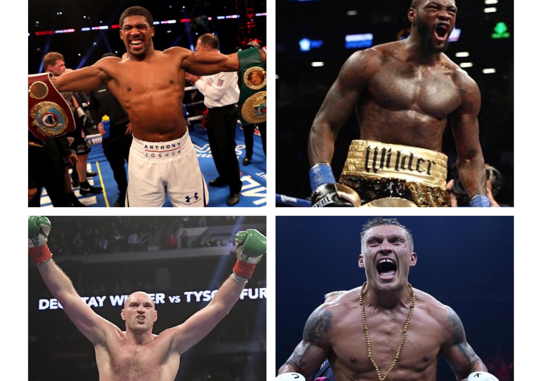
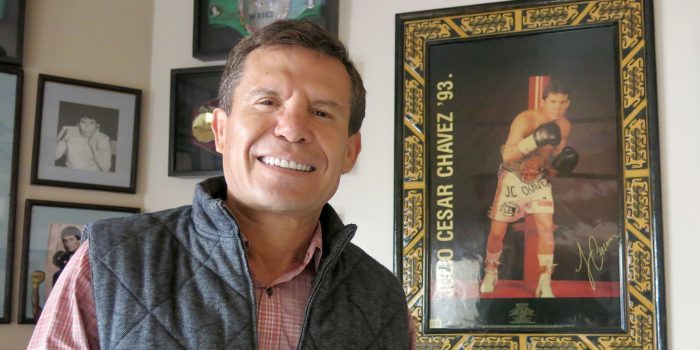
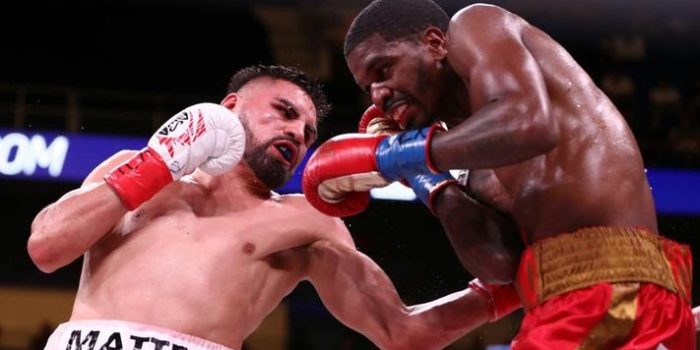
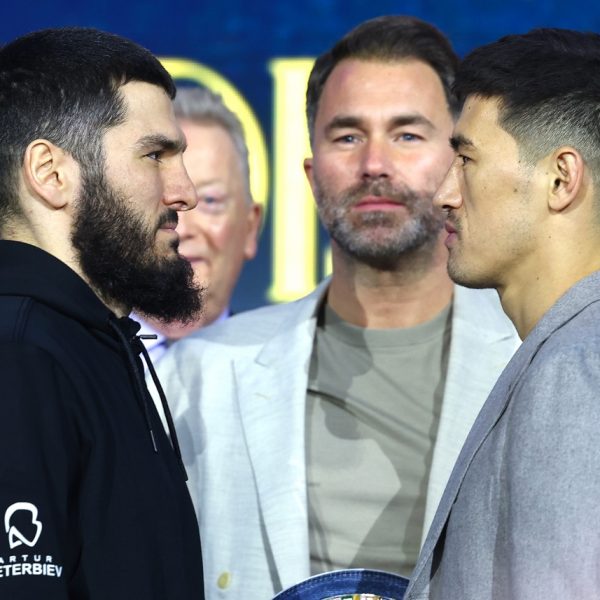
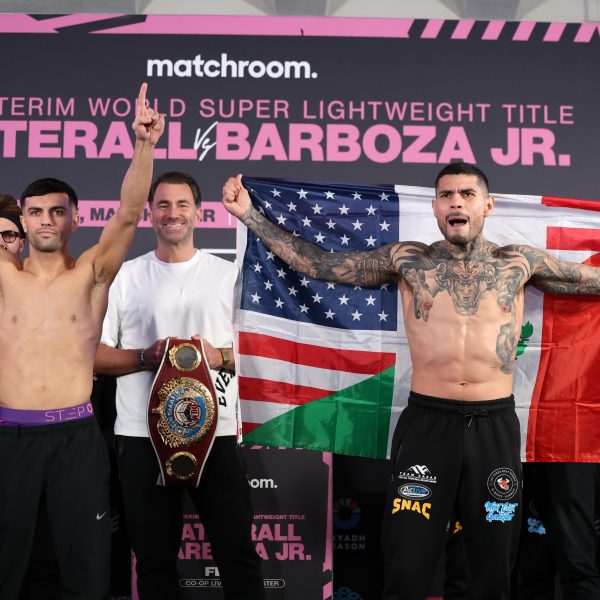
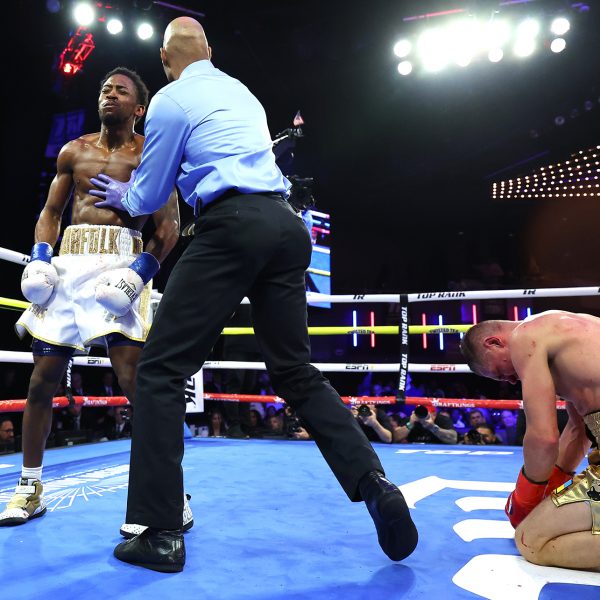


Recent Comments